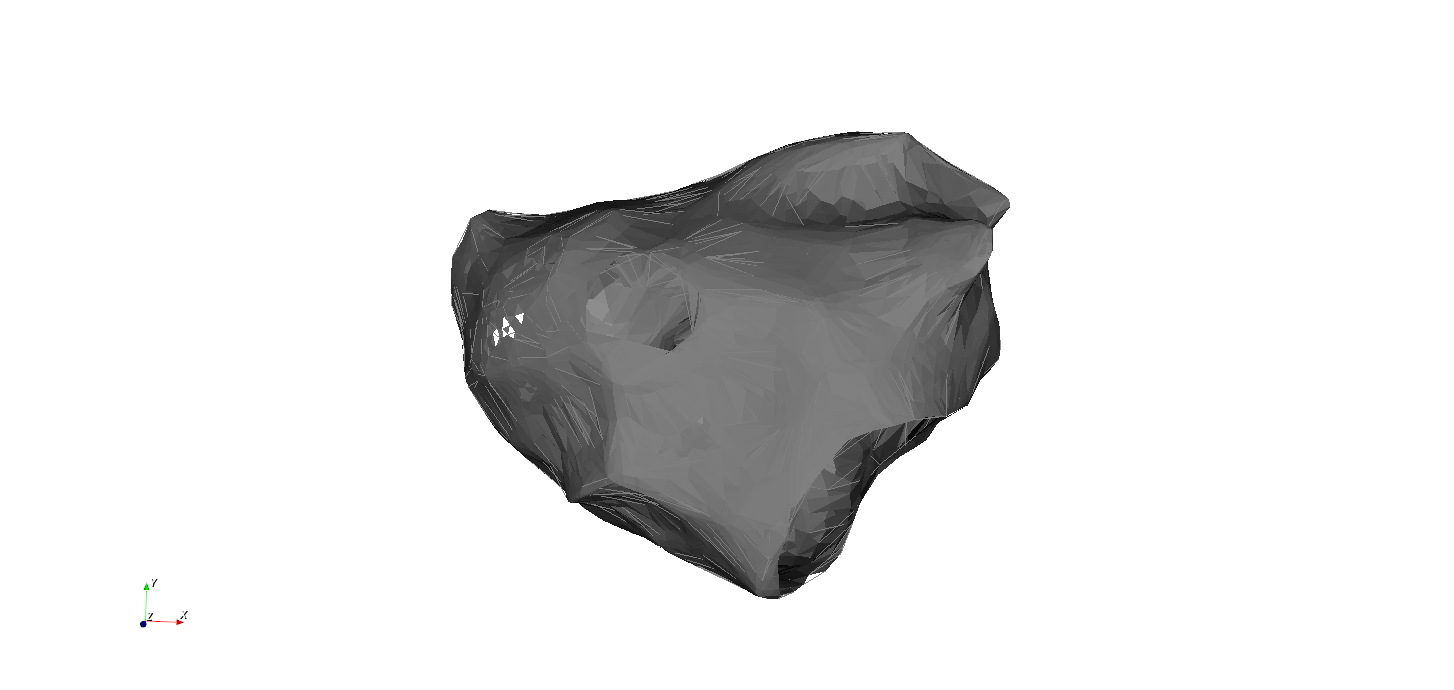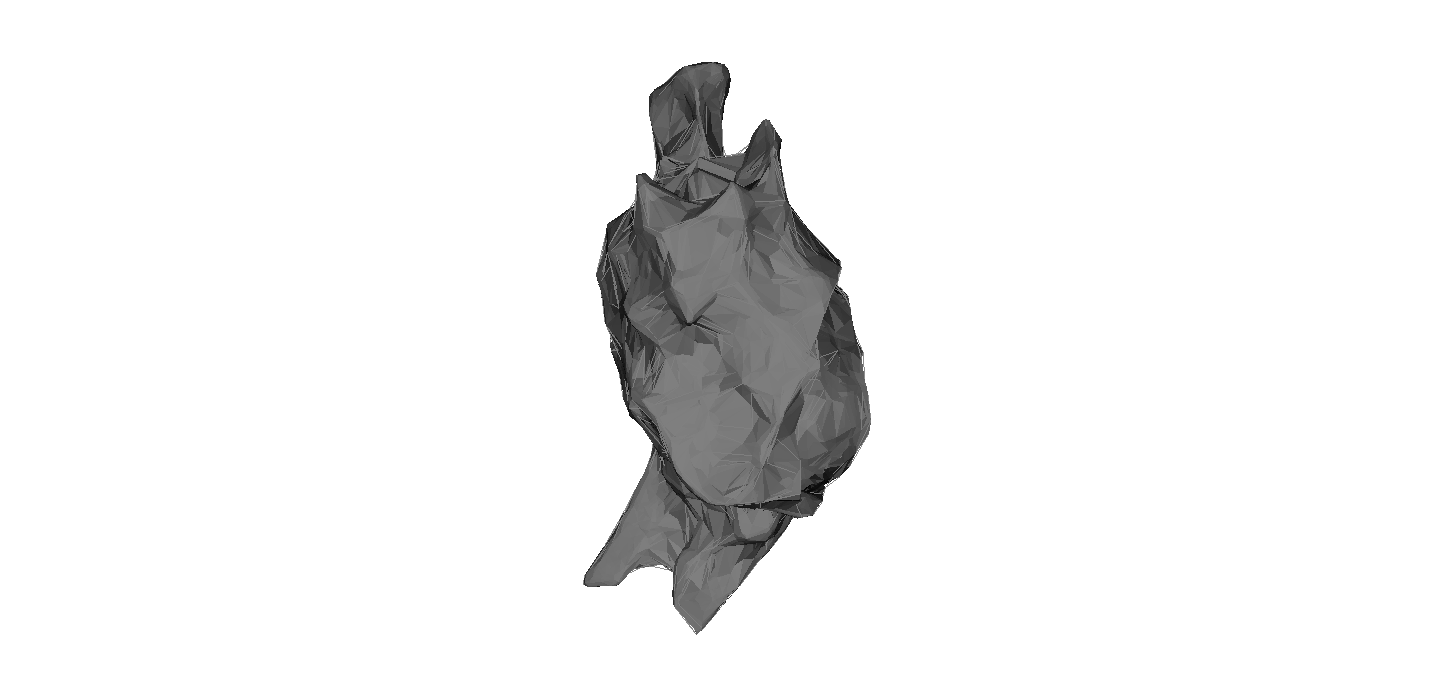Graph-based data analysis for the interpretation
of atrial arrhythmias


Nele Vandersickel
Graph-based data analysis and topology
for the interpretation
of atrial arrhythmias


Nele Vandersickel
Why do slower ATs arise after ablation?
Entrainment mapping finds the driving source
Slower AT after initial ablation, why do they arise?


Anterior
Posterior
Reentry at the roof
Slower AT at the MV


Anterior
Posterior
Roof ablation
Entrainment mapping finds the driving source


Anterior
Posterior
Reentry at the roof
Roof ablation: slower AT at the MV


Anterior
Posterior
Why do slower ATs arise?
- 1/3 of the cases in our database
Slower AT after initial ablation, why do they arise?
We tried to create the most simple system

MV
LPV
RPV
Anatomy of the left atrium: 3 natural boundaries



MV
LPV
RPV

SVC
IVC
TV

Anatomy of the left atrium: 3 natural boundaries
Simulation on spheres with 3 boundaries
200 different simulations
Entrainment mapping
All possible virtual ablation lines: 600 simulation
3 Patterns
Simulation on spheres with 3 holes
Complete rotation
Incomplete rotation
Parallel activation
Good entrainment
Bad entrainment
Bad entrainment
Ablation

Incomplete rotation becomes complete rotation, resulting in a slower AT
100% of simulations!
Index theorem (> 20 years old!)


Indexes



Complete rotation

Parallel activation



Incomplete rotation
Critical Boundary
Critical Boundary
Non-Critical Boundary
CB: Santucci et al. JACC EP 2023
Ablation: connect the critical boundaries

CB:
CB:
NCB: 0
Incomplete rotation becomes complete rotation, resulting in a slower AT
Loops come in pairs of 2: currently second loop is always missed
Clinical cases



What happens in case we only have 2 boundaries?
Reentry around 1 boundary equivalent with reentry around other boundary
200 simulation with 2 boundaries


Clinical cases

Ablation: connect the critical boundaries

CB:
CB:
NCB: 0
Incomplete rotation becomes complete rotation, resulting in a slower AT
More than 3 boundaries: additional scar tissue
Scar creates additional holes

200 simulations with 4 boundaries
Clinical cases


All 131 clinical cases together
Clinical cases
131 MRAT cases



Clinical cases
20 detailed cases with slowing after ablation



Macro reentry
Localized reentry
Micro reentry
Focal
Rotor
Around anatomic obstacle, like valve or vessels.
Around non conducting area > 2-1.5cm, e.g. scar or functional block
-
Atypical Flutter (LA involving valves or vessels)
-
Atypical Flutter (RA involving valves or vessels)
-
Typical Flutter (clockwise and counter clockwise)
-
WPW
-
Atypical Flutter (LA with scar or previous ablation lines with gaps)
-
AVNRT (considering slow and fast pathway)
Around non conducting area < 1cm, e.g. scar or functional block
-
Atypical Flutter (LA with scar)
-
Atypical Flutter (RA crista terminalis region)
-
Ectopic AT
Spiral activation pattern with no scar in the core.
Focal activation from one single spot with centrifugal activation pattern
CL tends to be longer >350ms due to larger path
CL range varies and CL can shift around 20-40 ms during arrhythmia due to slight path variations
CL tends to be shorter due to short path, whole CL is covered by signals found in a small area like e.g. 4cm2 often a combination of double potentials in the „middle“ and very long fractionated signals surrounding
CL often not presented completely in one chamber
Focal activation patterns could also hint to epicardial entries – look for potential conducting structure like vein of Marshall, Bachmann´s etc. and exits that would fit a macro reentry with epicardial parts
We think non-existent in AT, especially as a stable configuration leading to a stable AT.
Maybe something close to a spiral pattern can exist in AF
-
AF
Current Classification...
Macro reentry
Localized reentry
Micro reentry
Focal
Rotor
Around anatomic obstacle, like valve or vessels.
Around non conducting area > 2-1.5cm, e.g. scar or functional block
-
Atypical Flutter (LA involving valves or vessels)
-
Atypical Flutter (RA involving valves or vessels)
-
Typical Flutter (clockwise and counter clockwise)
-
WPW
-
Atypical Flutter (LA with scar or previous ablation lines with gaps)
-
AVNRT (considering slow and fast pathway)
Around non conducting area < 1cm, e.g. scar or functional block
-
Atypical Flutter (LA with scar)
-
Atypical Flutter (RA crista terminalis region)
-
Ectopic AT
Spiral activation pattern with no scar in the core.
Focal activation from one single spot with centrifugal activation pattern
CL tends to be longer >350ms due to larger path
CL range varies and CL can shift around 20-40 ms during arrhythmia due to slight path variations
CL tends to be shorter due to short path, whole CL is covered by signals found in a small area like e.g. 4cm2 often a combination of double potentials in the „middle“ and very long fractionated signals surrounding
CL often not presented completely in one chamber
Focal activation patterns could also hint to epicardial entries – look for potential conducting structure like vein of Marshall, Bachmann´s etc. and exits that would fit a macro reentry with epicardial parts
We think non-existent in AT, especially as a stable configuration leading to a stable AT.
Maybe something close to a spiral pattern can exist in AF
-
AF
All of this is replaced by our simple classification!
Current Classification...

2nd Submitted paper
Atrial topology for a unified understanding of typical and atypical flutter
Mattias Duytschaever, Robin Van Den Abeele ... Annika Haas, Armin Luik, ... Sander Hendrickx, Nele Vandersickel
European Heart Journal
Atrial tachycardia: case study

Atrial tachycardia: case study

How to find the critical boundaries automatically?
Directed Graph Mapping
Tool that can analyze electro-anatomical mapping data using network theory
www.dgmapping.com
Directed Graph Mapping
New version almost ready open source/source available with restrictions for commercial use

You can create your own pipeline!
www.dgmapping.com
Directed Graph Mapping: features
www.dgmapping.com
- Input:
- OpenCARP
- RHYTHMIA
- CARTO
- Optical mapping data
- Calculation:
- Pre-processing
- Many different phase mapping methods
- Graph methods and measures
- Reentry loops (complete and incomplete)
- Post-processing
- Visualization:
- Extended toolkit for visualization
- Endlessly adaptable
Many examples!
Full Documentation
Tutorials
Ventricular Tachycardia
- Ventricles: thickness



Ventricular Tachycardia

Ventricular Tachycardia

Ventricular Tachycardia

Take home message

DGM: diagnostic tool based on network theory


CB:
CB:
NCB: 0
Incomplete rotation becomes complete rotation, resulting in a slower AT
Topology: Paired loop paradigm
Simplifying can help you find new things even in 'simple arrhythmia'!
www.dgmapping.com
Meeting Katja
By Nele Vandersickel
Meeting Katja
- 59




